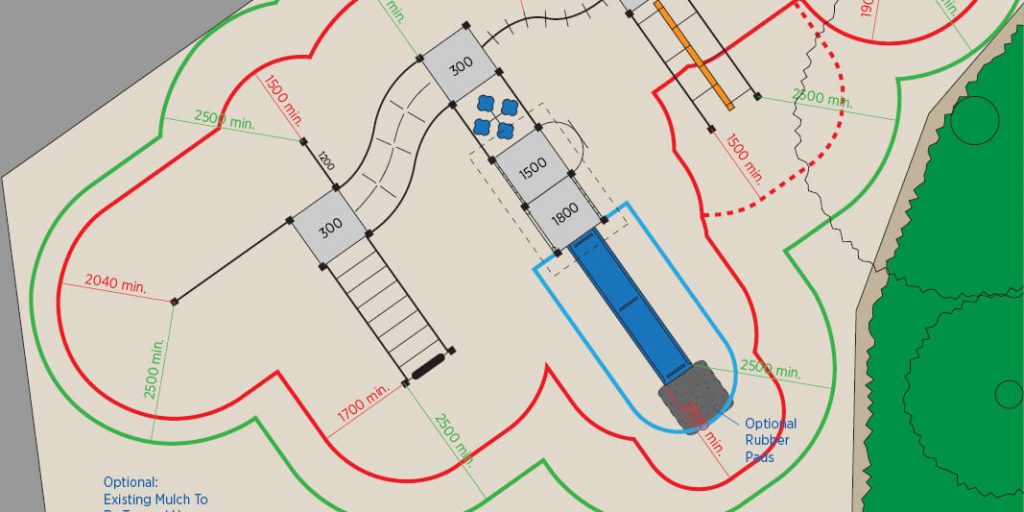Product added to your enquiry
Five Biggest Budget & Time Killers to Avoid on Your Playground Project
Ever encountered these situations? The play space project you’ve spent months designing is returned to your desk for a revision because it is over budget. You have to reissue landscape plans urgently due to Standards compliance issues. Or, you have to make last-minute tweaks to your specifications.
At adventure+, we’ve worked with landscape architects, councils, schools and landscape contractors for many years to create play spaces around Australia. We know that budgets often are blown, standard compliance issues arise and deadlines sometimes seem unachievable. In the blog, we’ve pooled five common pitfalls that can cause these issues and also share ideas on how to address them to ensure smooth project delivery.
1. Underestimating Costs
Even with direct experience in designing and delivering play spaces, it’s easy to underestimate the costs of playground equipment. An element that seems like it would be simple to the overall project can turn out to have complex engineering, transport, or auditing requirements. Or what is usually a costly price from one supplier is suddenly inexpensive from another, and vice versa. The result is that the project leaders will go through the whole, time-consuming process of community consultation, tender stage and official sign-off only to find that their playground is over budget. How do you avoid this with playground equipment? Never assume the price, always speak with your supplier to receive a budget figure. One phone call can save a lot of headaches.

2. Sourcing from Multiple Suppliers
Designers often select play equipment from different suppliers in order to find a specific item or get a better price. While this does have its benefits and is necessary, such as selecting a piece of equipment that is unique to the supplier, it can increase the likelihood of cost and timeline overruns. Using several different suppliers can increase the risk of miscommunication, and you can end up doubling your work and costs.
Consider the cost of having three different suppliers coming to one site. You could potentially be paying three lots of site establishment costs, travel costs, admin costs, and so on.
You can reduce complexity and minimise miscommunication by sticking to a single supplier. If your preferred supplier does not have the specific item you want, where practical, you can ask them what alternatives they have.
3. Not Knowing Client’s Preferences
We’ve had cases where a landscape architect has put a lot of time into customising a playground that incorporates timber, only to find out just before installation that the council has a no timber policy. Thankfully in this case we’re able to offer alternative materials. Similarly, this can occur with the heights of playgrounds. Make sure your proposed playground is in line with your client’s policies and preferences to avoid having to go back to the drawing board.
Many councils like to involve their maintenance teams in playground equipment selection. They know what works well and is easy to maintain into the future.

4. Not Consulting the Community in the Design Process
Remember that your playground will exist in and for a community; it is important that you seek feedback from that community early in the planning process to avoid issues further down the line. Parents, teachers, and children are often not consulted – or not given adequate opportunities to provide input – when a new playground is being designed. As a result, the playground is often unpopular and underused.
Neighbours may also have concerns about children being able to see into their backyards, for example. We have found that it is best to initiate community consultation early on in the project; that way, you establish the parameters that you will work to and the community feels a sense of ownership over the project.
5. Failing to comply with Safety Standards
Compliance with safety standards needs to be front and centre on any playground project. Impact areas that overlap landscape elements will require a redesign of the space or, in cases where the project is already at the construction stage, it will require expensive rectification. This usually arises due to miscommunication or lack of familiarity with the Australian Standards for playground equipment. Such problems can be avoided by working with a playground supplier who can double check your plans. Even better, email your plans through to adventure+ before the project goes out to tender. Nothing beats a second pair of eyes to ensure the project runs smoothly.

Contact adventure+ Today
The team at adventure+ will collaborate with you on your playground from start to finish. With our years of experience, we are able to identify and eliminate roadblocks and pitfalls before they have a chance to impact your project. Get in touch by phone or email to speak to one of our team members today.